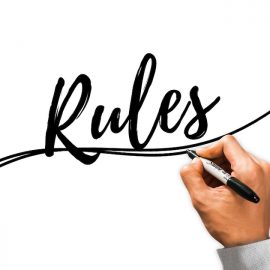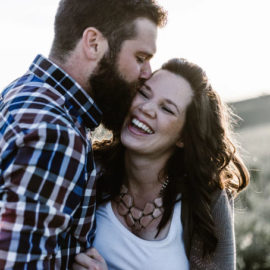
Have you ever wished you could tell what someone was really thinking? How skilled are you at reading people’s emotions? What do you communicate with your body?
Body language is a huge but often missed aspect of communication. We’ve put together five body language exercises that will help you explore how you communicate with your body, practice giving and reading cues, and learn to use body language to establish presence in stressful or uncertain situations.
Continue reading for these practical exercises you can use on your own or in a group setting.
Exercise 1: Examine How You Use Body Language
We’ll get to the fascinating art of reading body language in others. But, in this first body language exercise, think about how your body language affects your communication with others.
- What’s one way understanding body language could help you communicate better with other people? (For example, maybe you realize that you’ve been unintentionally giving off unfriendly nonverbal signals, and you plan to change your body language to make it easier to make friends. Or, maybe you want to use your knowledge of body language to better understand how your loved ones express their emotions.)
- What’s one personal context that affects your body language? (For example, maybe you grew up in a culture where it’s normal to hug people every time you greet them. Or, maybe you’re naturally shy, so you tend to have closed-off body language in public spaces.)
- How might this context affect how other people perceive you? (For example, some people might feel happy and comforted when you hug them, but others might find this gesture overly familiar. If people see closed-off body language, they may think you’re standoffish because they don’t know you’re shy.)
- Name one body language cue you’d like to use more to show people you’re open to friendship. Why did you choose this cue? (For example, maybe you want to smile warmly when you meet people so they feel welcome. Or, maybe you want to stand up straighter so people think you’re confident and want to approach you.)
Exercise 2: Practice Reading Body Language
This body language exercise is based on the concepts in The Dictionary of Body Language. Retired FBI Special Agent Joe Navarro offers a reference guide that explains a wide breadth of body language cues, creating a foundation for studying nonverbal communication. Navarro argues that, with this knowledge, you can improve your relationships and understanding of other people, both at work and in your personal life.
Practice reading the body language and deciphering the emotions of someone in your life.
- Choose one person around you and observe their body language—their posture, their facial expression, how they’re using their limbs, and so on. Write down three observations about their body language. For example, maybe you’re observing your coworker, and they’re squinting at their computer, tapping their fingers, and frowning. (If there’s nobody around, observe and note down your own body language.)
- What emotions might their body language convey? Write a possibility for each of your original observations. For example, squinting might indicate your coworker’s irritated, finger tapping could mean they’re bored, and frowning might indicate they’re displeased.
- What contextual clues might change the meaning of the body language cues you observed? For example, your coworker might be squinting because they’ve been looking at their computer for too long or tapping their fingers because it’s a pleasant way to stim.
- Overall, based on the person’s body language and their context, what emotion are they conveying? Explain your answer. For example, you might conclude that your coworker is conveying displeasure—while context might have changed the meaning of their squinting or tapping, their frown suggests that their mood is negative after all.
Exercise 3: Interpret an Uncertain Interaction
This body language exercise is based on the concepts in What Every Body Is Saying, another book by Joe Navarro. He argues that, by practicing good observation skills and learning to decode universal patterns of behavior, you can master the language of nonverbal communication, gain access to people’s true thoughts and feelings, and detect signs of deception.
Let’s practice applying his strategies to your own interactions.
- Consider a recent interaction with someone that left you uncertain about how they felt about you or the situation. Describe the context of this interaction. Where were you? What were you talking about?
- As Navarro advises, the first step of reading body cues is to establish a baseline. If you’re familiar with this person, what kind of behaviors are common for them? If they’re a stranger, how did they behave at the start of your interaction?
- Think back to how they behaved throughout your interaction—Navarro suggests you focus first on the lower body. Reflect on the direction they oriented themselves, how much they moved, and whether they performed any self-comforting behaviors. Did you notice any cues indicating security or insecurity?
- As your interaction went on, did you notice any gradual or rapid changes in their behavior? For example, they might have stopped gesturing with their hands or started turning their feet away.
- Based on the nonverbal cues you noticed, are there two or three that all point to the same conclusion?
Exercise 4: Practice Reading and Giving Nonverbal Cues
This body language exercise is based on concepts in Jack Schafer and Marvin Karlins’s The Like Switch. Schafer spent 22 years as a Special Agent in counter-intelligence, counter-terrorism, and behavioral analysis at the FBI. With the input of Karlins—a management and organizational behavior expert—Schafer applies his experience earning the trust of witnesses, suspects, and spies to the art of making friends and fostering powerful connections.
Take a moment to practice interpreting and applying nonverbal cues in a hypothetical scenario.
- Imagine you’re at a work-related party. You want to get to know a new hire in your department, but you haven’t had much chance to talk at work yet. You see her walk into the party, and you decide this is a good chance to try and get to know her a little. What are three nonverbal cues you could use to get her attention and show her that you’re interested in being her friend?
- You got your coworker’s attention, and now you’re having a conversation. As she responds to your questions, she smiles, and she tilts her head to the side. What might these cues indicate about her willingness to be your friend?
- You get onto the topic of your favorite places to eat in town, and you mention that you could never be a vegetarian. At this, she crosses her arms and leans back, breaking eye contact. Based on these cues, how does she feel about your statement?
- You move on to a different conversation topic. She’s talking animatedly, and it’s obvious the subject interests her. What are two ways you could show that you’re interested in what she has to say?
Exercise 5: Use Body Language to Achieve Presence
Have you ever felt anxious about a new social situation, an interview, a performance, or another environment where you lack confidence? In Presence, social psychologist Amy Cuddy explains how to navigate these stressful scenarios by embodying “presence”—a self-assured confidence that’s not arrogant but allows you to comfortably express your true self. She says you can achieve presence by leveraging the body-mind connection to change the way you feel about yourself rather than worrying about what others perceive.
Cuddy makes three main recommendations for increasing your presence: power posing before events that make you anxious, using open and friendly body language when you interact with others, and adjusting your posture through regular reminders or exercises that focus on breathing and stretching out. In this body language exercise, you’ll identify where presence could make the biggest impact in your life and make a plan to improve your presence.
- Presence is especially crucial in situations where you lack confidence or get stuck in negative thought cycles. Think of a stressful situation or context where you’d like to confidently express yourself, then describe your ideal behaviors or qualities in that scenario. For example, you might want to increase your presence when you’re in class, so you’re comfortable raising your hand and speaking up in discussions.
- Make a plan to power pose before the scenario in the previous question. For example, this could include power posing for a few minutes in your room or backstage before a performance.
- Now visualize the body cues that will help you convey presence during the stressful situation. Describe how you want your voice to sound, how you’ll move your hands and arms, and how you’ll display open, friendly, and confident body language.
- To cultivate presence in the long term, describe a situation where you find yourself exhibiting closed-off posture regularly, and then write at least one activity that could counteract it. For example, if you work at a desk for long periods, you might add a visual note to check your posture, change your office setup, or add a daily stretching routine to your schedule.






